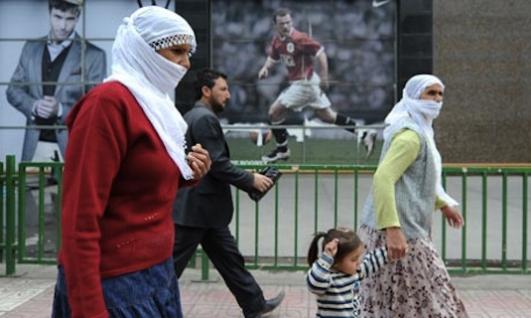
The most populated cities of Turkey are Istanbul, Konya, Urfa, Diyarbakir and Izmir, consecutively. Photo: AFP.
DIYARBAKIR, Turkey – The Turkish Statistical Institute (TurkStat) recently published the birth records of Kurdish citizens in Turkey.
According to these records, there are 22,691,824 Kurds in Turkey, mostly born in Kurdish cities in the southeast of the country. Therefore, out of Turkey’s 74.7 million citizens, more than 30 percent are Kurds. These records only include people who have been registered at official government institutions.
After the founding of the Turkish Republic, the first census was carried out in 1927. According to that census, the Turkish population was 13,464,564. At that time, Serhat was the most populous Kurdish city with 38,000 residents. The second most populous city was Dilok.
Official census records show that the Kurdish population in 1927 was 2,323,359. This number increased to 3,850,723 in 1950, to 5,147,680 in 1960 and to 10,505,672 in 1990.
According to TurkStat, the number of Kurds in Kurdish cities of Turkey in 2000 was 12,751,808; in 2012, this number increased to 14,733,894.
There are 8,902 Kurdish villages, 108 towns and 275 districts, according to TurkStat.
In the 2000 census, only residents of Kurdish cities were taken into account. From 1990 to 1997, under the pretext of security measures, around 4,000 Kurdish villages were evacuated and destroyed. The villagers left for other Turkish towns, and thus were not taken into account in this census.
Rohat Alakom, a researcher and writer, said that there are 102 Kurdish villages in Ankara, 75 in Konya, 44 in Kirsehir, 17 in Aksaray, 41 in Yozgat-Tokat-Amasya, 23 in Kaysari and 26 in Cankiri and Kizilirmak. There are around 313 Kurdish villages in central Anatolia.
Additionally, a large number of Anatolian Kurds have fled to European countries. There are no official records of the number of the Kurds in central Anatolia, but it is estimated to be no less than 1 million people.
Kurdish researcher and historian Jalili Jalil has presented an important document related to the Gozanogullari that shows a 1888 message from Suleyman Beg, a Gozanogullari member, directed to the Russian ambassador in which he presented himself as a Kurd.
TurkStat also published the number of the migrants. The largest number of migrants appears to be those who left Mardin for Izmir. There are also many Adana migrants in Urfa, and Arzrum migrants in Bursa.
The real number of Kurds cannot be determined with these statistics, but can give an idea of the actual figures.
Not all those who were born in Kurdish cities are Kurds. There are many other ethnicities who live in Kurdish regions but have been counted as Kurds due to their place of birth.
But, taking 22.7 million as the number of Kurds and adding the 1 million who live in central Anatolia and other regions, then subtracting the number of citizens of other ethnicities who live in the Kurdish regions, leads to an acceptable figure of around 20 million.
Turkstat has published the census records of 81 provinces of Turkey. They include the place of birth and the number of the citizens.
The most populated cities of Turkey are Istanbul, Konya, Urfa, Diyarbakir and Izmir, consecutively. The least populated cities are Yalova, Bayburt and Bilecik. The least populated Kurdish cities are Kilis and Jolemerg.
via Rudaw in English….The Happening: Latest News and Multimedia about Kurdistan, Iraq and the World – New Statistics Reveal the Size of Turkey’s Kurdish Population.